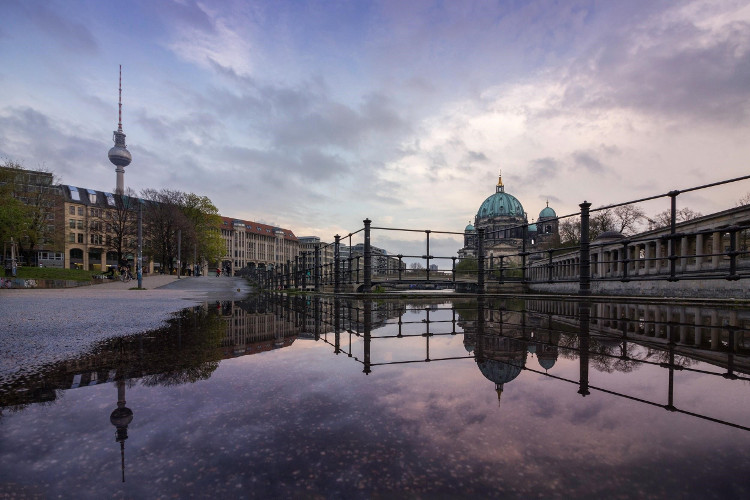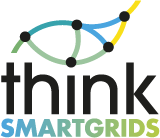Germany has embarked on an ambitious energy transition: Energiewende aims to reduce greenhouse gas emissions by at least 80% and make renewable energy the main source of energy supply by reaching 60% of final energy consumption by 2050. Digital technology and Smart Grids have, since 2008, been widely used in this great transformation.

Landscape in Berlin, Germany – Photo credit Patrick Schöpflin en CC
By 2022, German nuclear power plants will be decommissioned and other conventional plants will also cease operations. This evolution has an impact on the electricity network: in the coming years, more than 7,500 kilometres of the transmission network will have to be optimized, reinforced or newly built.
Smart Grids are one of the levers of this energy strategy.
2008-2013: 5 pioneering regions for the E-energy programme
In 2006, the German Federal Government decided to launch the “E-Energy: ICT-based Energy system of the Future” project to develop the intelligence and necessary network technologies to enable Smart Grids.
On this occasion, the Ministry of the Economy developed a concept of pioneer regions in the field of Smart Grids. Six “model regions” were selected to develop and test specific technologies on a full-scale between 2008 and 2013: new supply methods, wind and solar forecasting systems, intelligent buildings, micro cogeneration plants.
- The eTelligence project was deployed in Cuxhaven, a rural area where approximately 50% of electricity generation derives from wind power. It consisted in developing a supervision system to better manage wind energy, of an unpredictable nature, and better integrated into the network.
- The E-DeMa (Development and Demonstration of Decentralized Integrated Energy systems on the Way Towards the E-Energy Marketplace of the Future) project, deployed in the Rhein-Ruhr region, was intended to develop an electricity market, control and monitor all supply and demand using digital technologies.
- The MeRegio project focused on developing a minimum emissions certificate for the Karlsruhe / Stuttgart region, with the aim of completely eliminating CO2 emissions caused by heating and electricity consumption. In the experiment, smart meters and communication infrastructures were used to detect the state of the network at medium and low voltages and respond accordingly.
- The Model City Mannheim (Moma) project in the Rhein Neckar metropolitan area in Mannheim, which includes a lot of distributed power generation, set itself the goal of building a private smart electricity grid in Mannheim and Dresden, connected to the electricity, gas, water and district heating networks. It aimed to improve energy efficiency and network quality by integrating renewable energy sources into the city’s distribution network.
- The RegModHarz project, in the district of Harz, a major producer of renewable energies, aimed to ensure that the network would remain stable in spite of the integration of these intermittent energies.
- The Smart Watts project, deployed in Aachen, involving 70 distribution system operators with an interest in developing an “energy Internet”. It focused on developing smart electricity meters and an infrastructure in which customers can receive useful and detailed information about their consumption habits and new services in the energy market.
Funding for these projects amounted to around 140 million euros, with the Federal Ministry of Economy, the BMWi contributing 40 million euros and the Federal Ministry of the Environment, the BMUB, 20 million euros, the remainder being borne by industry and DSOs.
On 7 May 2014, the BMWi presented an assessment of the “E-Energy” programme in Berlin.
2016: Bill on the digitisation of energy transition
The federal law on the digitisation of the energy transition adopted in July 2016 frames and encourages the development of smart meters (44 million connected meters by 2026) as well as a digital infrastructure to connect more than 1.5 million electricity producers and the largest consumers. The focus is on the introduction of tailor-made intelligent systems, which will serve as a secure communication platform. Since the protection of personal data is a priority in Germany, stringent protection mechanisms have been introduced in Europe.
According to NorthEast, the digital transition of the German energy system represents a total investment of around 23.6 billion euros. In addition to meters, Germany could spend around €12.6 billion on smart sensors, communications devices, distribution network optimisation software and storage.
2016-2020: 500 million for five SINTEG demonstrators in five regions
While the rise of renewable energies calls for a redesign of its electricity grid, the BMWi, the Federal Ministry of Economy, agrees that the deployment of Smart Grids has fallen behind schedule. To this end, the BMWi has launched a new programme, SINTEG, which aims to develop solutions that promote RES integration, flexibility, security of supply, system stability and energy efficiency.
In a return to a regional approach, the BMWi selected, after a competition, five pilot regions for five “showcase” projects.
- The C / sells project will be implemented in Baden-Württemberg, Bavaria and Hesse and focuses on solar energy. The emphasis is on optimising regional production and consumption.
- The Designetz project will take place in North Rhine-Westphalia, Rhineland-Palatinate and Saarland and aims to supply solar and wind energy to urban and industrial consumers.
- The Enera project (Lower Saxony) aims to set up regional grid management and regulation services that stabilise the grid locally and thus increase the reliability of renewable energy-based electricity supply.
- The objective of the “New 4.0” project in Schleswig-Holstein and Hamburg is to demonstrate that the region will have a reliable and efficient supply system from 2025 based on 70% renewable energy.
- The “WindNODE” project will cover the five eastern Länder and Berlin. The objective is an efficient integration of renewable energy production into a multi-energy system combining electricity, heat and mobility.
Some of the selected projects started in late 2016, others in early 2017. They will be implemented over four years. According to the BMWI, these projects involve nearly 300 companies and public players. The total investment is estimated at 500 million euros, 200 euros of which will come from the BMWi.
ITEMS International for Think Smartgrids



